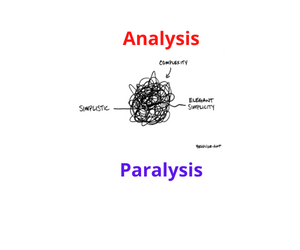There’s been a lot of talk about Stablecoins, maybe too much talk. With Big Blue,IBM, announcing their World Wire productwith a Stablecoin capability, it seems a good time to ponder how the banks’ plumbing is going to be affected.
On-chain payment is an important topic if you believe that the financial services marketplaces will be tokenised and move to peer-to-peer markets. There is enough activity in the space to say that the market believes this will be the case, though the spread on the view of timing is wide.
Thinking about this part of the plumbing, cash management, is important. Firstly, financial services are a huge contributor to GDP. MIT’s Gary Gensler rightly observed in a recent article in the Bankerthat if this sector accounts for 7.5% of GDP, how efficient it is makes a difference to the ordinary man in the street.
Secondly, we know how squeezed banks’ margins are (cf. McKinsey: Remaking the bank for an ecosystem world, Oct 2017) . Making super-normal profit is no longer possible, so if there is only normal profit to be made. then everybody makes $1 in revenue and the place with the best process will be the winner and have the most of that $1 left over as profit.
Thirdly, liquidity management is a hellishly expensive activity. In late 2018, a report from Oliver Wymanpainted a very clear picture. Big banks typically need a liquidity buffer of $100 billion, of which 10 to 230% is driven by intra-day liquidity, i.e. all the effort that goes into making sure cash or money borrowed form a correspondent or custodian is in all the places it needs to be at the right time. That intraday element drives costs of $100mm to $300mm per year. The banks are discovering that is niche part of the bank has a bigger impact on costs than several hundred outsourced workers. In fact, banks ought to welcome any development that helps them reduce the number of places they keep money irrespective of all the “chain” developments.
In Financial Services, as we take the next step in the evolution of the foundations of our industry, we have a once in not very often chance to build some great infrastructure that delivers lower cost financial services. That will benefit all of us. So as we think about tomorrow’s financial markets, we know there are three key ingredients: tokenised assets, new trading venues and a means of payment on-chain. Might Stablecoins issued by commercial banks and corporates be the answer for payment?
Imagine we get to a production state of having Bakkt from ICE, IBM Coin and JPM Coin, all in USD. How might this work? Let’s think of this in terms of real-world actors.
#1 If any party wanted UBS to take any one of these in settlement, whether UBS would accept it will depend. If UBS uses JP Morgan as its USD Correspondent, then it should be indifferent whether it holds JPM Coin or a balance in an account at JPM. it’s the same risk. UBS should have some means of monitoring its intra-day risks and be able to determine if having a bigger balance at JPM leads to them exceeding their limits. Generally, across all banks though, the capability to monitor risks intra-day is not really well developed.
In this use case, JPM Coin is a useful part of JPM’s internal payment machinery, enabling them to transfer efficiently between two JPM clients. The humble book transfer on a new platform. JPM has been pretty clear that is one of the things they see JPM Coin being useful for, alongside helping them explore what is possible with this new technology.
What would UBS have to be able to do if it wanted to accept Bakkt & IBM Coin? First, a real-time credit assessment to work out if it could take each coin as this adds to its JPM exposure. Real-time risk assessment on in-bound payments and not on a specific account; this is hard, even if the average GSIB started on this now, it would not be a normal thing before I retire.
#2 Let’s say UBS is a nice friendly wholesale market participant and takes in 100mm JPM Coin, 50mm Bakkt and 30mm IBM Coin. That might make 180mm in total USD, however there are some significant buts associated with that:
- The amounts are all held in different locations; it is not one pot of 180
- Risk wise it is not all equal – bank risk vs. tow flavours of corporate risk, and on the asset side of the balance sheet there would need to be a Risk Weighted Assets adjustment. So a not so small, though maybe manageable headache for the UBS risk apparat
- Each of those holdings of coin is an IOU
#3 Now UBS needs to make a payment to Credit Suisse of $170mm. Today, in the fiat world, UBS would simply make a payment and would not have to wonder if it can discharge its obligation with the $170mm transfer of fiat money. In this imaginary scenario, it has three kinds of coin, its cash & liquidity management systems need to recognise that its’s balance of $180mm is made up of three different flavours of IOU. Then it would need to do something else new.
Just before making the payment, UBS will need to understand how it is going to piece together the payment; think how when you play monopoly you put together those different coloured bills to pay for something. Then it has to communicate with CS and say: “To cover the $170mm we owe you, we’ll give you an IOU from JPM of 100, 50 from ICE / Bakkt and 20 from IBM. Is that ok?”. Now UBS needs CS’s risk systems to be able to do the same real-time credit risk assessment. Stretch the Imagination and assume CS was actually capable of doing the evaluation. Then CS says: “In Jamie and Big Blue we trust, but our lines are full with ICE risk.” Zurich, we have a problem. The only way out of this for CS would be to “defund” and turn each of those coins back into fiat; CS will certainly take $170mm of fiat cash.
Notice how the introduction of coins creates a far bigger cash management challenge than we have today. In step #1, the challenge is limited; UBS used JPM as its Nostro and has either fiat cash or JPM Coin. If it wants to make a payment, it can make JPM convert to fiat cash, albeit that does not guaranty immediate settlement. In step #3, UBS has three different kinds of IOUs, they are not fungible, then the job of paying people it owes money to has just got exponentially more difficult. To use the trendy phrase, more difficult by an order of magnitude.
So what would the report card for these stable coins look like in terms of the three roles of money:
- Store of value – not 100% because of the need to risk weight the asset
- Medium of exchange – not 100% because the person you owe money too might not be able to take the risk of the IOU issuer
- Unit of account – again not 100%, because of the risk weight
So the Bankers’ Plumber’s view on this is a simple one: no coin that is not the equivalent of cash can be of any great use outside the boundaries of the institution that issued it. Like crime in a multi-storey car park, any form of Stablecoin as a means of payment outside the institution that issued it is wrong on many levels.
Over at the USC, Utility Settlement Coin, Project we are excited about the importance of having a robust solution for payment on-chain. To enable the value chains of tomorrow’s financial market infrastructure, there is a clear need for a digital cash asset to settle tokenised value transactions with finality. There are huge network effects network benefits when a currency is widely used and accepted for all three of the roles of money cited above. We are working on it. Watch this space.
Share on:



